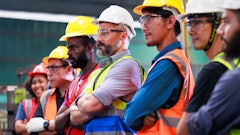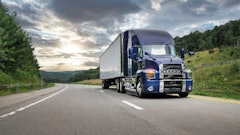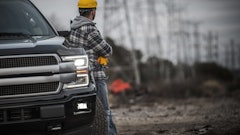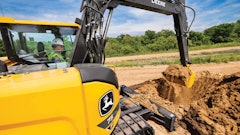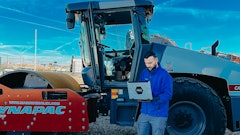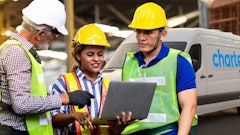
For the State of the Industry Report, the Equipment Today team talked with three Bobcat experts:
- Ryan Delahoyde, vice president of strategy, Bobcat
- Joel Honeyman, vice president of global innovation, Bobcat
- Garrett Maurer, director of global digital product management, Bobcat
This Q&A details their insights.
What was the construction industry’s biggest challenge in 2023?
Delahoyde: The construction industry has faced, and we predict will continue to face, overall labor shortages across all areas for years to come. According to a summer report from Associated Builders and Contractors, [more than] half a million open worksite and construction positions have been reported and that number is forecasted to continue to climb.
While the pandemic and subsequent project slowdowns have contributed to the lingering worker shortage, a bigger hurdle … is the overall perceptions of the industry and the types of career opportunities available. Ongoing education efforts in STEM and skilled trades need to include information about the diverse opportunities in the construction industry and the … options this industry of work affords.
Are changes in the workforce, including retirements, affecting your company?
Delahoyde: Like many other businesses, talent recruitment and retention remain an ongoing priority. We are facing worsening labor constraints across many of our locations, which has proven to be a challenge in filling open positions in both professional and production positions. With low unemployment in the U.S. and many open positions, we see shorter employment retention [compared] to previous years where individuals stayed with one company for much of their career.
Is your company still experiencing fallout from the pandemic, including supply chain issues or other problems?
Delahoyde: There are still some ongoing challenges with the supply chain, but in comparison to even a few months ago, we are in a much better position.
In what technological areas do you see the potential for the most innovation in 2024? What innovations or improvements do you anticipate in construction equipment in 2024?
 Joel HoneymanDoosan Bobcat
Joel HoneymanDoosan Bobcat
We can also expect to see OEMs testing these capabilities in new, larger-scale ways to really push the envelope for both electrification and autonomous operations. This will be true, especially for grounds maintenance and landscaping equipment, where both electric and autonomous technologies have taken off more quickly than other segments.
We can also expect to see the adoption rate of these types of technologies vary across different types of jobs and tasks, and to an extent, different sectors. We are already seeing certain customers—municipalities, for example—gravitate toward the adoption of electrification thanks to the sustainability value proposition [that] electric machines provide. However, we still anticipate that 2024 will be a year of education for customers who are still undecided about the power and productivity these types of machines can offer. Customers will start to see new features becoming available much like the auto industry has introduced new features and vehicles.
Ultimately though, these advancements in electric, semi-autonomous and autonomous capabilities will continue to be developed in conjunction with ongoing technological advancements in diesel machines. Customers will always want variety and choice in their equipment, and as an equipment manufacturer, we will continue to develop for customer needs.
How are IIoT, software and connectivity affecting your company specifically and the industry as a whole?
 Garrett MaurerDoosan Bobcat
Garrett MaurerDoosan Bobcat
At Bobcat, Industrial Internet of Things (IIoT) and connectivity are top-of-mind and something we actively progress. This has not only pushed us to deliver valuable, new capabilities to our customers but has also evolved our entire product ecosystem to support digitization.
Safety and security are top priorities when customers can remotely interact with their Bobcat machine —whether that digital interaction be on the jobsite or prompted from halfway around the world. We are designing our new machine platforms, at their most basic levels, to include the enablement of IIoT functions. It takes years to implement the sensors, controls and other required technologies, so our roadmaps continue to shift as we further integrate digital functionality into our iron.
Regarding our industries, the general perspective is "catch up or be left behind." Every major player has their own connectivity or has partnered with a connectivity platform. It requires us all to evaluate our businesses to properly incorporate digital solutions and ensure we can balance the costs these solutions add with the value we provide our customers.
Companies that excel will accommodate a broad range of applications while deeply integrating these solutions into their iron and infrastructures. These capabilities will be the key differentiations.
What will be the biggest challenge in 2024 for the industry?
Delahoyde: Overall, we expect 2024 to be a good year for the industry, manufacturers, dealers and customers. We anticipate, however, that it will be a more challenging and competitive environment.
There are projections for a slowdown or soft landing, so we anticipate the biggest challenge for the industry will be the macroeconomic environment. As a manufacturer, the general uncertainty around the macroeconomic environment will make balancing end customer demand with supply output less predictable.








